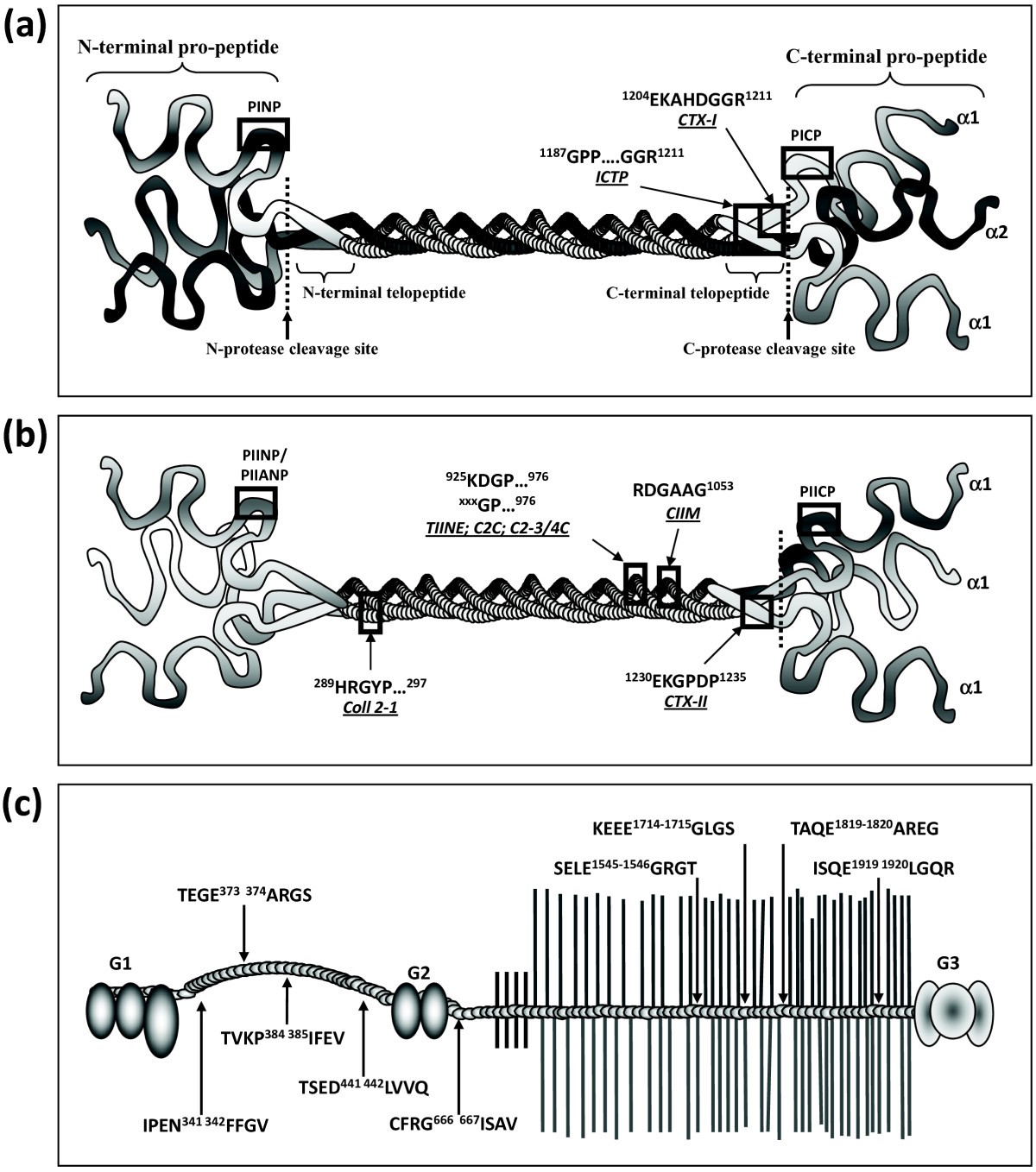Figure 3

Protease-generated neoepitopes in aggrecan and collagen type I and II. (a,b) The amino- and carboxy-terminal pro-peptides PINP (amino terminus propeptide of type I procollagen), PICP (carboxyl terminus propeptide of type I procollagen), PIINP (amino terminus propeptide of type II procollagen) and PIICP (carboxyl terminus propeptide of type II procollagen) in collagen type I (a) and collagen type II (b) are used to define protein formation, as they are released during formation of the matrix. (a) In contrast, the degradation markers ICTP (type I collagen; MMP mediated) and C-terminal telopeptide of type I collagen (CTX-I; cathepsin-K mediated) located in the carboxy-terminal telopeptide are found in body fluids after degradation of collagen type I. (b) The CTX-II (MMP mediated) degradation marker is located in the carboxy-terminal telopeptide in collagen type II. Coll 2-1, TIINE, C2C, and C2-3/4C are degradation markers located in the helix of collagen type II. (c) The aggrecan molecule is shown with the MMP cleavage sites (upward arrows) and ADAM-TS (a disintegrin and metalloproteinase with thrombospondin motifs) cleavage sites (downward arrows). CIIM is a novel MMP mediated type II collagen degradation marker [142]. Figure adapted with permission from [8].